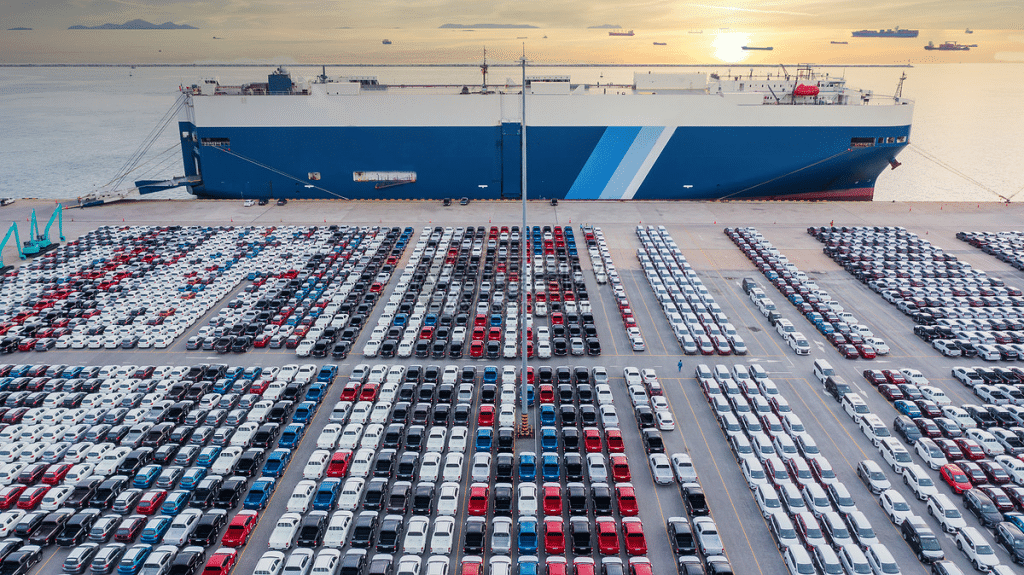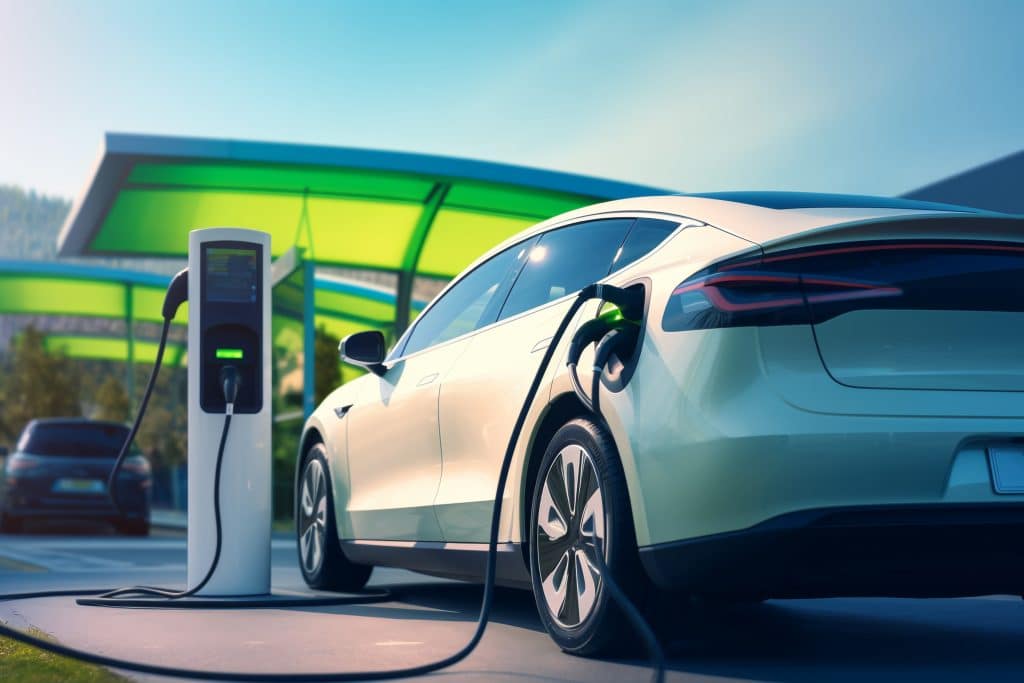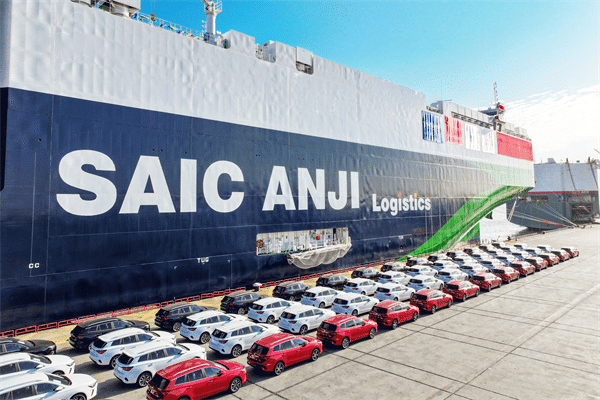China is now a global leader in vehicle manufacturing and exports, becoming the largest automobile exporter in 2023 with over 5.22 million vehicles shipped worldwide. Importing vehicles from China, including passenger cars, electric vehicles (EVs), and luxury cars, offers cost advantages and access to a diverse range of models. This guide will cover everything you need to know about the vehicle import process, shipping methods, and the costs involved in shipping vehicles from China to various regions, including the Americas, Europe, and the Middle East.

This guide provides a comprehensive overview of how to import and ship vehicles from China, detailing the advantages of buying vehicles from China, the shipping process, costs, and documentation required. Whether you are importing vehicles to the Americas, Europe, the Middle East, or Southeast Asia, this guide will provide the insights you need for a seamless import process.
Why Import Vehicles from China?
1. Cost Efficiency
China’s large-scale manufacturing capabilities result in lower production costs, which translate to more affordable vehicle prices for importers. Importing from China allows businesses and individuals to access high-quality vehicles at a fraction of the cost compared to other global manufacturers.
2. Wide Range of Vehicle Options
Chinese automakers offer a diverse range of vehicles, including economy cars, electric vehicles (EVs), luxury SUVs, and specialized commercial vehicles. The variety allows importers to meet the specific needs of their target markets, whether it’s passenger vehicles, industrial trucks, or environmentally friendly EVs.
3. Technological Innovation
China leads the global market in electric vehicle (EV) production and autonomous driving technology. Brands like BYD, NIO, and XPeng offer cutting-edge vehicles that cater to the rising demand for energy-efficient and smart technologies. This innovation makes Chinese vehicles attractive to markets worldwide.
4. Quality Improvement
Chinese automakers have significantly improved their production standards and quality assurance. Vehicles now meet or exceed many international safety and performance standards, making them competitive alternatives to Western and Japanese brands.
Endorsements for Major Chinese Auto Brands
Chinese automobile brands have earned endorsements and recognition globally for their innovation, quality, and commitment to sustainability. Here are some of the top Chinese brands that are making a mark in the international market:
1. BYD (Build Your Dreams)
BYD is a global leader in electric vehicles and battery technology. With its reputation for high-quality, affordable electric cars, BYD has become a favorite in countries like Norway, Australia, and the UK. The brand has received numerous accolades for its environmental initiatives, and its electric buses are used in major cities worldwide. Notably, Warren Buffet’s investment in BYD has further boosted its credibility, making it a trusted name in green automotive solutions.
2. NIO
Known as the “Tesla of China,” NIO has gained international fame for its luxury electric SUVs and sedans, featuring advanced autonomous driving technology. NIO’s unique battery-swapping technology and its premium customer service experience have made it stand out in the EV industry. NIO is expanding into the European market, including countries like Germany and Norway, where it is receiving positive reviews for its performance and innovation.
3. Geely
Geely has risen to global prominence, not only through its vehicle production but also by acquiring international brands like Volvo and Lotus. Geely’s commitment to safety and quality has earned it a strong reputation in both passenger and luxury vehicle markets. The brand is a dominant force in Asia and Europe, with ongoing expansion into new regions.
4. XPeng
XPeng is another key player in China’s electric vehicle revolution, offering smart vehicles equipped with autonomous driving features and AI-based technology. XPeng’s electric sedans and SUVs are gaining traction in Europe, with notable success in markets like Norway. The brand has been recognized for its focus on safety, innovation, and sustainable mobility.
5. Great Wall Motors
Great Wall Motors (GWM) is known for its reliable and robust SUVs and pickup trucks. GWM has expanded its presence in markets such as Australia, South Africa, and Russia. The brand is lauded for producing durable, cost-effective vehicles with a focus on performance and versatility, particularly in rugged terrain conditions.

Common Types of Vehicles Imported from China
- Passenger Vehicles: Sedans, SUVs, and commercial trucks are among the most popular choices.
- Luxury Vehicles: High-end brands like Mercedes-Benz and BMW are also produced in China.
- New Energy Vehicles (NEVs): EVs and hybrid vehicles are increasingly sought after due to environmental benefits and incentives in many countries.
- Special Purpose Vehicles: This includes construction machinery, buses, fire trucks, and other vehicles designed for specialized industries.

Step-by-Step Guide to Importing Vehicles from China
1. Identify the Right Supplier
Finding a trustworthy supplier is the first critical step. You can locate reputable manufacturers by attending trade shows, visiting factories, or using trusted platforms like Alibaba. It’s important to verify the manufacturer’s certifications and production standards to ensure the quality of the vehicle.
2. Choose the Right Vehicle Model
Select a vehicle that fits your market needs. Whether it’s an electric vehicle for an eco-conscious market or a luxury SUV, confirming specifications and negotiating prices with the supplier is essential.
3. Sign a Contract
Once you’ve chosen a vehicle, signing a purchase agreement with the supplier will protect both parties. Make sure the contract includes specific details about pricing, delivery timelines, vehicle specifications, and payment terms.
4. Prepare Export and Import Documents
The supplier will need to provide all necessary export documents, such as the commercial invoice, certificate of origin, and packing list. You will also need to prepare for customs clearance in your own country, which might require an import license and product certification.
5. Choose a Shipping Method
Once the vehicle is ready for export, you must decide between sea freight, air freight, or rail freight based on your budget and timeline. We’ll cover these options in detail below.
6. Customs Clearance and Delivery
After the vehicle arrives at the destination port, it must go through customs clearance. This involves paying import duties, VAT, and any additional taxes. Ensure that the necessary documents, such as the bill of lading and customs declaration, are in order to avoid delays.

Shipping Methods for Vehicles from China
1. Roll-On/Roll-Off (RoRo) Shipping
- Best for: Large or commercial vehicles.
- How it Works: Vehicles are driven directly onto the ship, secured in a large cargo area, and shipped without containers.
- Advantages: RoRo is cost-effective, but the vehicle is exposed to environmental conditions.
- Estimated Cost: $1,500 to $2,500 per vehicle.
- Transit Time: 20-40 days, depending on the destination.
2. Shared Container Shipping
- Best for: Smaller vehicles or when shipping multiple cars.
- How it Works: Vehicles are shipped in a shared container, offering additional protection from weather and damage.
- Advantages: Provides more security compared to RoRo, though it is slightly more expensive.
- Estimated Cost: $2,000 to $3,500 per vehicle.
- Transit Time: 25-45 days, depending on the destination.
3. Full Container Load (FCL) Shipping
- Best for: High-value vehicles or shipments requiring extra protection.
- How it Works: Vehicles are loaded into a dedicated 20-foot or 40-foot container for maximum security during transit.
- Advantages: FCL shipping offers the most protection but at a higher cost.
- Estimated Cost: $3,000 to $4,500 per vehicle.
- Transit Time: 20-40 days.
4. Air Freight
- Best for: Urgent or high-value shipments.
- How it Works: Vehicles are transported via air, which reduces shipping time but significantly increases costs.
- Advantages: Fastest shipping method available.
- Estimated Cost: $5,000 to $10,000 per vehicle.
- Transit Time: 5-10 days.
Shipping Costs and Transit Times
Shipping costs depend on various factors such as vehicle size, shipping method, destination, and additional services like insurance. Below is a general overview of costs and transit times for each shipping method:
| Shipping Method | Estimated Cost (Per Vehicle) | Transit Time |
|---|---|---|
| RoRo | $1,500 – $2,500 | 20-40 days |
| Shared Container | $2,000 – $3,500 | 25-45 days |
| Full Container (FCL) | $3,000 – $4,500 | 20-40 days |
| Air Freight | $5,000 – $10,000 | 5-10 days |
Factors affecting costs include the type of vehicle, shipping distance, port fees, and any additional services such as customs handling or insurance.
Documentation Required for Vehicle Shipping
- Bill of Lading: A document issued by the carrier that confirms the shipment details.
- Commercial Invoice: Outlines the transaction between the buyer and the seller, including the vehicle’s value.
- Certificate of Origin: Proves that the vehicle was manufactured in China.
- Packing List: Lists the contents of the container, especially important for shared or FCL shipments.
- Customs Declaration: Required for import clearance, stating the vehicle’s details and tax information.
Popular Vehicle Export Destinations from China
- Russia: Leading the market with over 900,000 vehicles imported in 2023.
- Mexico: A major importer of Chinese vehicles, with over 415,100 units.
- United Kingdom: A growing market, importing over 213,800 vehicles.
- Saudi Arabia and UAE: Key Middle Eastern markets importing luxury and commercial vehicles.
- Southeast Asia: Countries like Thailand and Indonesia are increasingly importing affordable and environmentally friendly vehicles from China.
Learn more information
Importing vehicles from China offers a cost-effective and reliable solution for businesses and individuals looking for high-quality, diverse, and technologically advanced vehicles. Endorsements from international markets, such as the growing popularity of brands like BYD, NIO, and Geely, only add to the appeal of sourcing vehicles from China.
Understanding the shipping options, documentation requirements, and associated costs will ensure a smooth import process. Whether you are shipping to the USA, Europe, or the Middle East, China’s growing automotive export market is ready to meet your needs.


